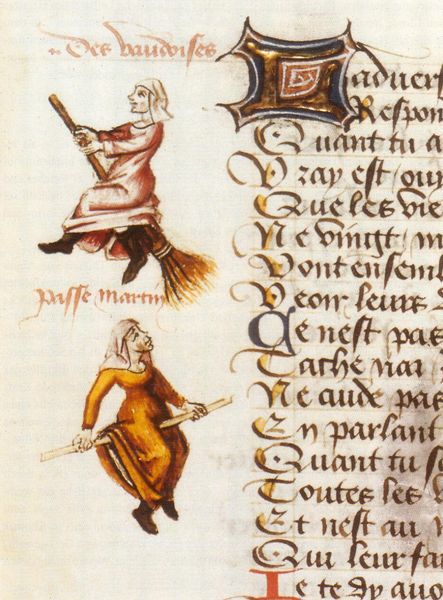A Witches' Sabbath is a purported gathering of those believed to practice witchcraft and other rituals. The phrase became especially popular in the 20th century.
Sixteenth-century Swiss representation of Sabbath gathering from the chronicles of Johann Jakob Wick. Note Horned God seated on serpent-enlaced throne, witch performing the osculum infame upon a demon and another being aided by a demon to summon a storm from her cauldron, while others carouse and prepare magic potions
Index of a 1574 printing of Malleus Maleficarum
Witches' Sabbath - Johannes Praetorius: Blockes-Berges Verrichtung, Leipzig, 1668.
La danse du Sabbat, artist Émile Bayard: illustration from Histoire de la Magie by Jean-Baptiste Pitois (a.k.a. Paul Christian), Paris, 1870: circle dance of naked witches and demons around Devil standing on a dolmen atop a tumulus.
The Waldensians, also known as Waldenses, Vallenses, Valdesi, or Vaudois, are adherents of a church tradition that began as an ascetic movement within Western Christianity before the Reformation. Originally known as the Poor of Lyon in the late twelfth century, the movement spread to the Cottian Alps in what is today France and Italy. The founding of the Waldensians is attributed to Peter Waldo, a wealthy merchant who gave away his property around 1173, preaching apostolic poverty as the way to perfection.
Statue of Peter Waldo at the Luther Monument in Worms
Illustrations depicting Waldensians as witches in Le champion des dames, by Martin Le France, 1451
Piedmontese children forced from their parents
Massacre of the Mérindol Waldensians in 1545








